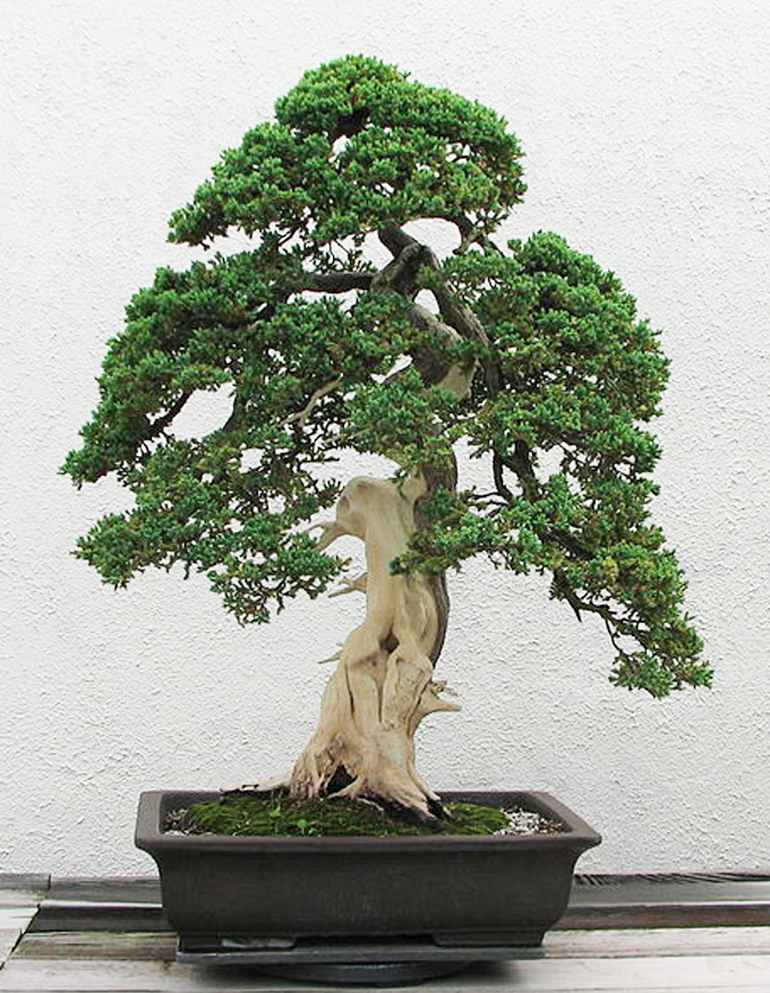
This lovely tree with its natural flowing feel is from a 2012 Bark post. The tree resides at the National Bonsai and Penjing Museum. It’s listed as a Procumbens nana, though I’ve never seen a ‘nana’ with such a massive trunk. Which begs the question… (the story is here).
It’s archive time again. This post originally appeared in September 2013. It was titled Not Shimpaku and was supposed to be the start of a series on juniper bonsai. Like many starts in life, it turned out to be a non-starter (maybe later…?).
Japanese Garden Juniper bonsai
Shimpaku junipers rule. You see them everywhere and for good reason; they make excellent bonsai and because they grow wild in the mountains of Japan and have been collected and refined by some of the world’s great masters, they stand as some of the most amazing works of bonsai art on the planet. Still, there are a whole host of other junipers that make great bonsai, so I thought it might be worthwhile to start a Not Shimpaku series on some of these.
The Japanese garden juniper (Juniperus procumbens) and its dwarf cultivar (J procumbens ‘nana’) is a good place to start. In the U.S. at least, the dwarf ‘nana’ has long been the most popular beginner’s tree. For years you’d see young ones in malls (Mallsai) every holiday season and though they are not quite as popular now, you still see more than enough of them around. But you don’t see that many specimen quality Procumbens and you almost never see seldom see specimen Procumbens nana. Part of this is no mystery; Procumbens are slow to develop trunk girth and Procumbens ‘nana’ are even slower. Still, we’ve managed to dig up some worthwhile specimens.
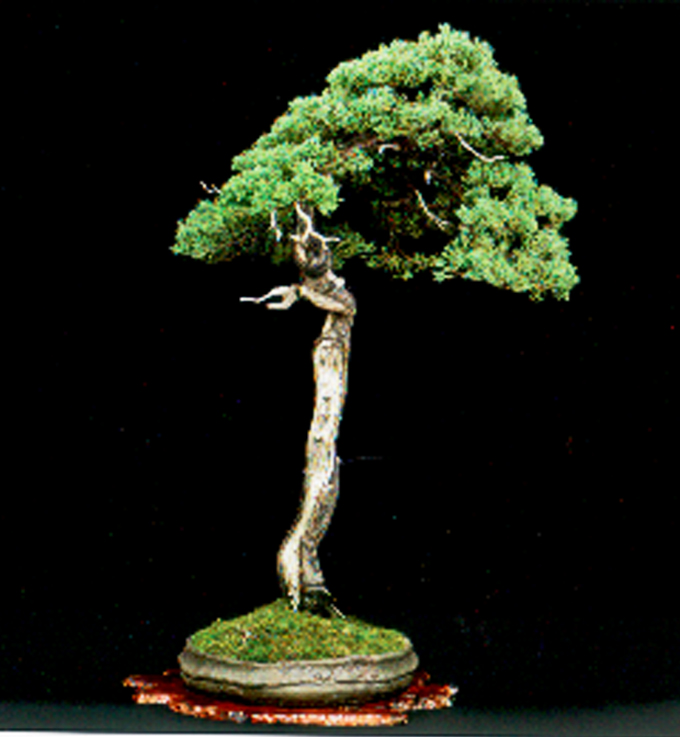 Dwarf Japanese Garden Juniper by Michael Sullivan. From the 3rd U.S. National Bonsai Exhibition Album (apologies for the fuzzy scan). One thing that stands out is how a combination of small touches soften the long, mostly straight, untapered trunk. First there’s the irregular pot which helps emphasize the small irregularities in the trunk. Then there’s the shari (deadwood strip) that adds movement and interest all the way up the trunk. Finally there’s the surprising little jin at the top of the trunk that further enhances the sense of movement (and adds a touch of humor).
Dwarf Japanese Garden Juniper by Michael Sullivan. From the 3rd U.S. National Bonsai Exhibition Album (apologies for the fuzzy scan). One thing that stands out is how a combination of small touches soften the long, mostly straight, untapered trunk. First there’s the irregular pot which helps emphasize the small irregularities in the trunk. Then there’s the shari (deadwood strip) that adds movement and interest all the way up the trunk. Finally there’s the surprising little jin at the top of the trunk that further enhances the sense of movement (and adds a touch of humor).
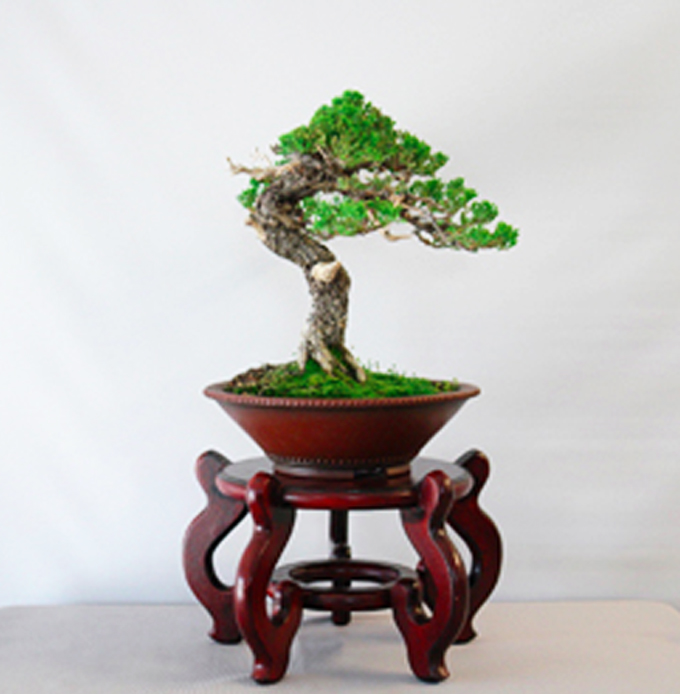 This little gem belongs to Thomas J. Mozden. I found it at The Art of Bonsai Project where it’s listed simple as Juniperus procumbens. But, to my eye (though it’s hard to tell in this somewhat fuzzy blow-up) the foliage looks like it might be a Procumbens nana.
This little gem belongs to Thomas J. Mozden. I found it at The Art of Bonsai Project where it’s listed simple as Juniperus procumbens. But, to my eye (though it’s hard to tell in this somewhat fuzzy blow-up) the foliage looks like it might be a Procumbens nana.
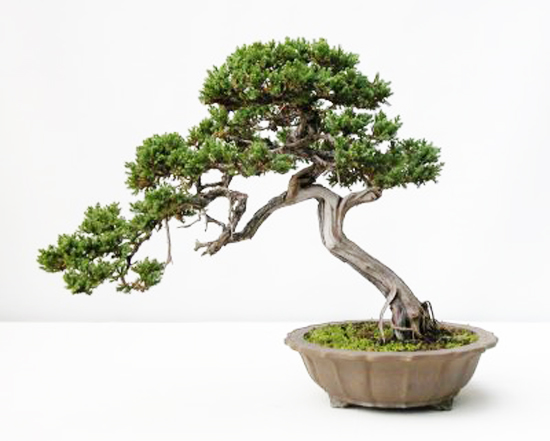 This Procumbens by Zhao Qingquan is also from the Art of Bonsai Project. A later version in a very interesting pot can be found Zhao’s excellent book, Penjing: The Chinese Art of Bonsai.
This Procumbens by Zhao Qingquan is also from the Art of Bonsai Project. A later version in a very interesting pot can be found Zhao’s excellent book, Penjing: The Chinese Art of Bonsai.
If you are a fan of Procumbens nana or just curious, you might want to check out the comments on the original post.
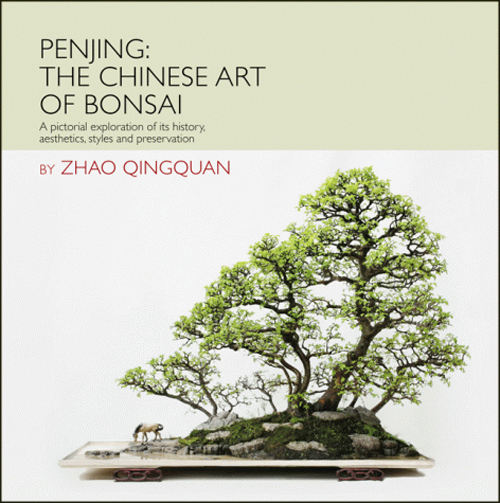
Speaking of Zhao’s excellent book, here it is. Like everything else at Stone Lantern it is currently 20% off (of the already discounted price no less).